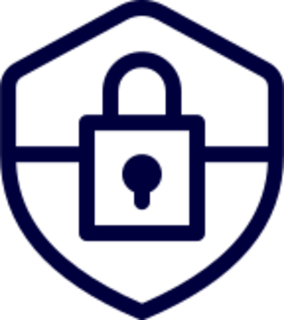Web3 Wallets for Beginners

Crypto wallets are no longer just about holding assets. Today, traders want tools that give them full control of their private keys, let them trade directly on decentralized exchanges (DEXs), swap tokens across blockchains and access new projects before they hit the market.
That’s exactly what Web3 wallets make possible. But with so many options available, how do you choose the right one?
In this guide, we’ll walk you through what these wallets are, how they work and how to start using one.
What is a Web3 wallet and why do you need one?
Web3 wallets are either software applications or hardware devices you can use to manage the public and private keys needed to interact with blockchains. Said keys function as credentials that prove ownership and authorize transactions, allowing you to buy, sell and trade cryptocurrency.
Sound familiar? If you find this is awfully similar to what crypto wallets can do, that’s because it is. After all, all Web3 wallets are technically crypto wallets — but not all crypto wallets are Web3 wallets.
The key difference that sets the latter apart is that they also let you engage with the world of decentralized finance (DeFi), an emerging digital system that reduces the need for financial third parties. An important component of DeFi are decentralized applications (dApps), which you can only interact with through Web3 wallets.
How a Web3 wallet works
The first thing to understand is that a Web3 wallet doesn’t actually store your crypto. The coins and tokens always live on the blockchain, and your wallet is merely a way to access them. What they store is the aforementioned public and private keys.
But Web3 wallets don't just hold keys. They also act as your digital identity across the decentralized web. For example, when you visit a dApp, you can connect your wallet instead of creating a username and password. The wallet then signs a message proving you control the address, and the dApp can interact with your funds, NFTs or tokens directly.
In practice, using a Web3 wallet involves downloading the app or extension, creating a new wallet, writing down your recovery phrase and then funding it with a small amount of crypto. From there, you can send or receive tokens, connect to dApps, swap between assets, stake your crypto or view your NFTs all through your wallet’s interface.
There are two principal types of Web3 wallets: single-chain and multi-chain. Those options are based on the types of blockchains users can access with a Web3 wallet. For example, Best Wallet’s non-custodial, no-KYC, Web3 option is a multi-chain wallet that gives you access to more than 60 blockchains.
That means with Best Wallet, you can manage, swap, and stake assets like bitcoin, ethereum, solana, meme coins and more, all in one app. Because it’s a wallet first, Best Wallet gives you privacy and self-custody by default, while still allowing easy access to regulated on- and off-ramps whenever needed.
Best Wallet’s Web3 wallet puts everything in one place: You can buy crypto with Apple Pay, credit or debit cards or local rails, then swap it on-chain through the built-in DEX, which works across dozens of blockchains including Solana.
Key features to look for in a Web3 wallet
Once you start looking for a Web3 wallet, ask yourself the following when comparing different options:
- How strong is the wallet’s security according to its team (and third-party audits)?
- How many blockchain networks and tokens does the wallet support?
- How easy is it for you to navigate the wallet and use it for your goals?
Security is arguably the most important component of a Web3 wallet — or any crypto wallet, for that matter. Some wallets rely on traditional recovery phrases, while newer designs use alternative recovery methods such as passkeys or multi-party computation.
Regardless, all wallets benefit from security features like transaction controls, anti-phishing protections and hardware wallet support. A highly-secure Web3 wallet will also have been audited by one or more trustworthy third-parties — such as Certik, SlowMist and Trail of Bits — to demonstrate how vulnerable its code is.
The second factor to pay attention to is network and token support. Not all wallets work across all blockchains, so it’s essential to confirm that the one you choose is compatible with the assets you plan to hold, be it bitcoin, ethereum or your favorite solana meme coins.
Ease of use also matters — especially for beginners — given the complexity of many Web3 wallets. Look for a wallet that is simple to set up, offers a clear interface and includes educational resources for new users. Some even feature a full onboarding process that teaches you how to use all or most of the wallet’s features.
Returning to the Best Wallet example, its Web3 wallet allows you to control your own private keys and crypto assets. The wallet also doesn’t have KYC requirements and is designed to interact with dApps, the broader Web3 environment and features security measures such as multi-party computation, two-factor authentication and integration with Web3Auth.
Quick guide: How to use Best Wallet's Web3 wallet
If you’re looking for a strong example of a Web3 wallet, here’s a four-step guide to downloading, connecting and using Best Wallet:
- Install Best Wallet from your device's official app store and complete setup.
- Back up your recovery phrase securely and offline.
- Fund your wallet (e.g., with ETH, which you can transfer from an exchange or buy in-app if available in your region).
- On a DEX platform, such as maxi doge to purchase the token’s presale, select Connect Wallet → WalletConnect → Best Wallet.
- Choose the asset to swap (e.g., ETH → MAXI). Review the rate, gas fee and any presale limits.
- Confirm the transaction in Best Wallet and wait for on-chain confirmation.
- After the presale ends, return to the site and claim your crypto (e.g., MAXI) to your Best Wallet address.


